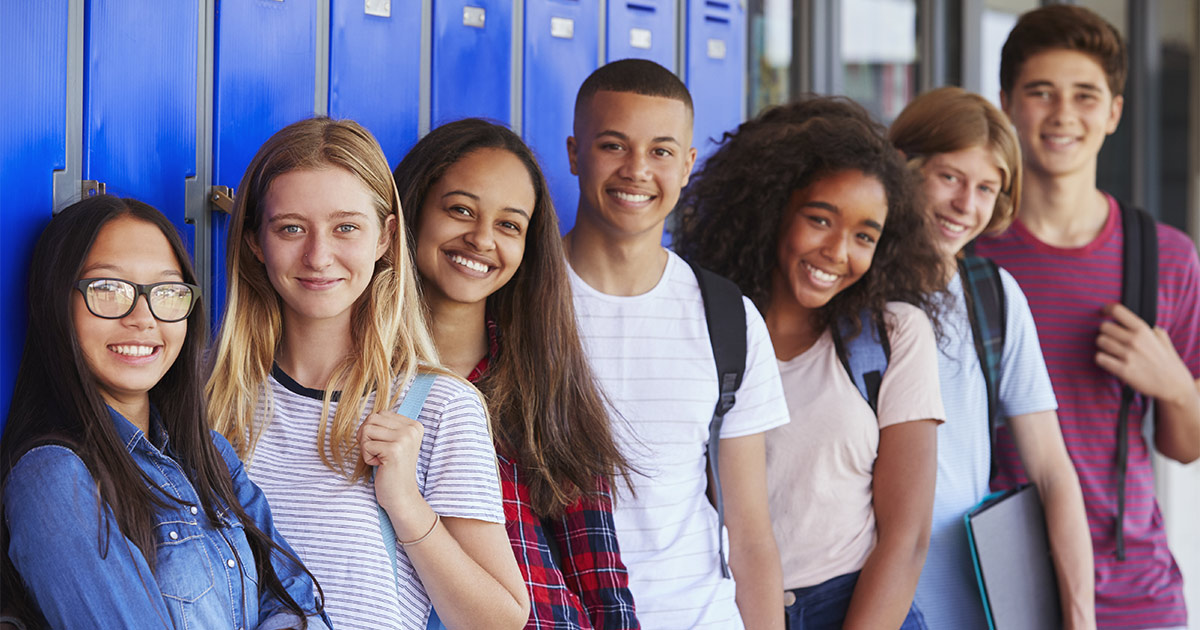
There’s no doubt that students who understand what it means to be a good friend benefit in many ways — from better communication skills to better grades. Plus, good friends make good citizens — and the world needs all it can get. So help your students understand and develop quality friendships at any grade level with these awesome lessons.
Preschool
Friendship Theme for Preschool: Preschool is all about making those first friendships. Preschool Plan It, offers multiple ideas to celebrate, develop, and encourage early friendships. With art projects, circle time activities, and snack ideas, there’s no limit to the ways friendships can bloom for your preschool kiddos.
Group Cooperation Activity: In the early years, friendships are forged through acts of kindness, sharing, and social skills. With a simple ball of yarn, your little ones can kinesthetically participate in learning how to be a better friend and classmate.
Early elementary
Friendship Activities for The Rainbow Fish: Sparkly fins for all his friends! The Rainbow Fish learns he’s happier by sharing his glittery scales than keeping them all to himself — and so will your students. Use Marcus Pfister’s award-winning children’s book to inspire your young students. Then continue with activities like creating their own friendship fish, building a friendship chain, or completing a small writing assignment.
How to Be a Friend: Acting out friendship can help students develop the skills to be good friends. Using the children’s book, How to Be a Friend by Laurie Krasny Brown and Marc Brown, teach students about friendship through group work to create a skit and an illustration of what they’ve learned.
Note: Education.com is an awesome resource, but does require a free membership to see the full lesson.
Upper elementary
Read-Aloud Lessons to Foster Friendships: Even older elementary students love to be read to. And reading to them allows them to think about their own experiences while hearing about someone else’s. With great book suggestions and pairing options, Scholastic provides insight into ways that students can benefit from read-alouds and discussions about friendship.
Read Across the World: Friendships aren’t limited by borders. Looking at a variety of resources, this lesson has students determining themes in stories from all over the world. Friendship will be one theme they identify as they explore adventures with kids just like them who are also very different. With multiple differentiating opportunities, students will read, document, and explore the world around them.
Middle School
There’s Nothing Better than a Good Friend: Friendships change in this phase of adolescence. During puberty and beyond, friendships become more about common interests and support. Although many kids think they know what friendship is at this age, sometimes they’re wrong…or at least confused. There’s Nothing Better than a Good Friend is lesson 7 in a larger unit, but is completely usable as a stand-alone, longer lesson of study. Students explore friendships through the development of their own positive friendship criteria, individualized and group work, multiple activities, assessments, and discussions.
Cliques in Schools: Unfortunately, in middle school, friendships can mutate into exclusive cliques. And cliques aren’t healthy for anyone (ahem, Mean Girls, anyone?). Cliques in Schools is a lesson to dive into the differences between friendship circles and cliques, as well as the drawbacks of restricting friendships in groups. Exploring the definitions of each and brainstorming ways to form relationships beyond cliques, students will be encouraged to take steps to integrate their school and possibly participate in Teaching Tolerance’s Mix It Up Day.
On Friendship: Sometimes what we think is obvious, isn’t.This lesson asks students to really think about friendship and the qualities that should and should not be traits of solid, positive relationships. The culminating activity asks students to analyze themselves to understand their part in the friendships they have and hope to make on their journey through life.
High School
Cliques, Friendship Groups, Or Boxes: At the high school level, friendships become more important — not only for their benefits but for what can happen when they aren’t built successfully. PBS’s In the Mix: Educators’ lesson provides high school teachers an opportunity to have a frank discussion about the benefits and drawbacks of teenage relationships. The lesson provides various media elements, group and class discussion questions, tasks, and assessments, as well as suggestions for differentiating. Created for two 45-minute classes, this lesson can easily be lengthened and developed into further lessons and activities.
Friendship & Vulnerability: TED Ed is revolutionizing educational content. Their Friendship & Vulnerability lesson integrates video, online questions, and extension activities to keep the discussion and learning going. While the information they provide is easily accessible and worthy of any great lesson, they also supply a “customize this lesson” link so you can truly dig into the topic and connect it to the curriculum plan you’re currently working on.
Friendship & Peer Pressure Bullying Lesson Plan: “He made me do it” is a mentality that goes beyond the elementary years. Sure, not too many teenagers point their finger and actually say those words, but often they feel they have to do something in order to fit in or be liked. Unfortunately, many teens don’t always recognize that the reality of true friendship is liking someone for what they do AND don’t do. This lesson brings awareness to the truth: bullying and peer pressure can happen within friendships. Broken into 7 steps, it encourages students to really think about friendship and appropriate relationship behaviors.
Friendship makes the world go round.
By teaching your students how to build strong and lasting friendships, you’re helping to develop their moral compass and shape their character. At the end of the day, few things matter more than that!
